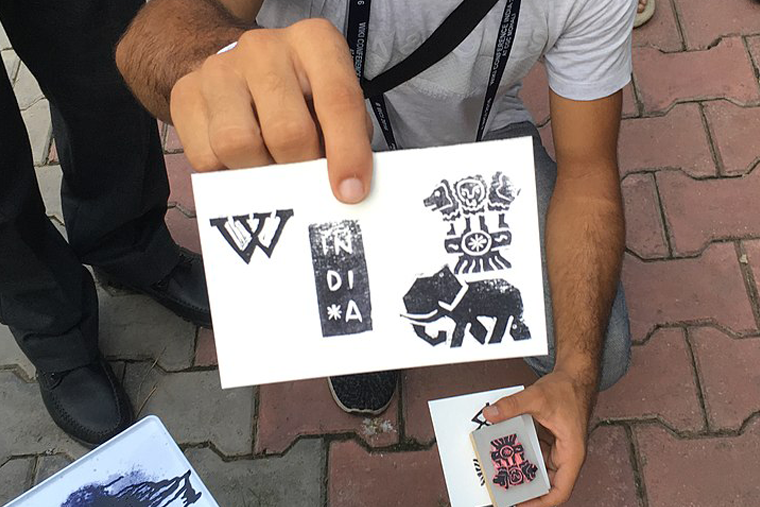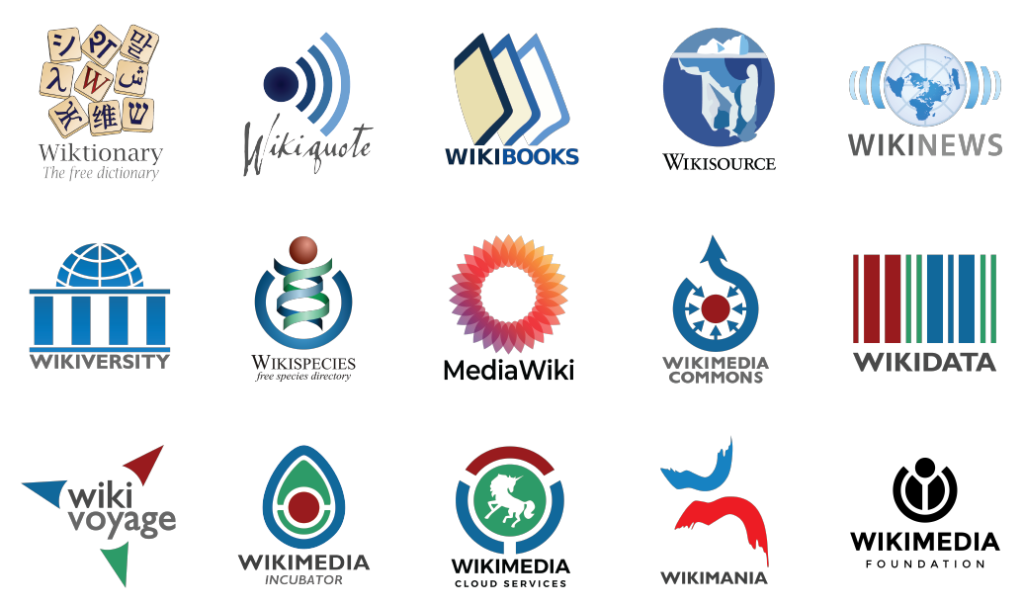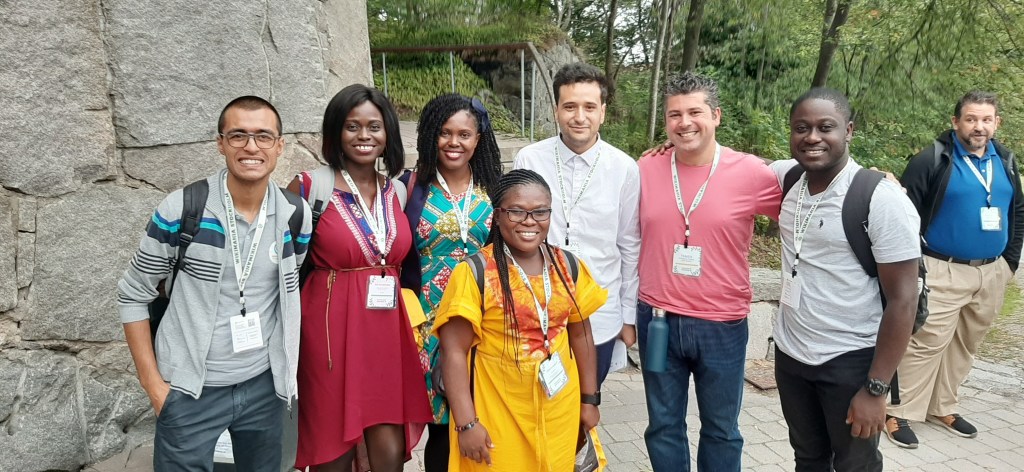Brand
Stewardship
Report
Published February 2023

The Wikimedia brands represent the goodwill created by the collective contributions of millions of people over more than two decades. Aside from the people who constitute it, the brands are the most valuable asset within the Wikimedia movement. They shape how millions of current and potential readers and contributors view the Wikimedia projects. When our brands are held in high esteem, and associated with values such as trust, reliability, and accessibility, more people use Wikimedia to share and use free knowledge. When misperceptions about Wikimedia spread or we ignore shifting trends about how people share and consume information, we risk becoming less relevant both as a platform and a free knowledge endeavor.
With so much at stake, the Wikimedia Foundation dedicates time and resources to caring for the Wikimedia brands with legal support, research, and creative support. This report provides an introduction to the current state of the Wikimedia brands and explains the work done by Foundation staff to manage them in the present and for the future. We are publishing this report with the goal of providing additional insight into our approach to stewarding the brands of a global movement of free knowledge communities and projects. We hope that it will be interesting and informative to current Wikimedians as well as to people who are just learning that Wikipedia is part of a broader movement.
What is a “brand”?
What comes to mind when you hear the word “brand”? You may think of a logo, or the name of a product or business. You may imagine an organization’s official color palette or the ® symbol they put next to their protected trademarks. All of these and more can be components of a brand. Together, they can create an emotional attachment to the brand, a feeling or set of values associated with these colors or marks. This collection of attachments, associations, and emotions is known as brand equity.
Many of the elements that build brand equity, such as names and logos, are trademarks, and receive some measure of legal protection.
For example, the puzzle globe logo is a registered trademark of the Wikimedia Foundation. Because of its widespread use (on every language version of Wikipedia) and its history, it serves as a visual representation of the free, collaboratively edited encyclopedia.
Aside from some limited pre-approved cases, mostly related to common community activities, the Foundation generally needs to review and grant approval whenever the puzzle globe logo is to be used.

A redesign of the puzzle globe created to celebrate Wikipedia’s 20th birthday

The Wikipedia puzzle globe
Not all visual elements of a brand function as trademarks. For example, the “citation needed” tags on Wikipedia have become iconic enough to appear in an xkcd comic and to grace t-shirts. They hold a lot of brand equity: they are highly visible, they are beloved, they symbolize the essential iterative, “under construction” nature of Wikipedia, and they capture Wikipedia’s editorial voice. However, they are not used or protected as trademarks.
What are the Wikimedia brands?
Each Wikimedia project and entity has a brand, though these brands can and do overlap. For example, the Wikisource brand includes the name “Wikisource”, the Wikisource logo, and the wikisource.org domain name. The Wikisource Community User Group has its own distinct brand elements, such as its logo, but its brand also overlaps with the brand of the Wikisource project. In addition, the stylized “Wikisource” wordmark that appears as part of the Wikisource logo has a design similar to the stylized “Wikipedia” wordmark, creating further overlap.

Wikimedia Project Trademarks
All of the separate project and organization brands also relate to the umbrella “Wikimedia” brand. Some relate very directly, like Wikimedia Commons and the Wikimedia Foundation, but others relate mainly through the public’s understanding of Wikimedia organizations and projects as part of an interrelated global social movement for free knowledge. We know that for the moment, not everyone who uses the projects has that understanding, and that the public’s perception of Wikipedia in particular is often distinct from their perception of Wikimedia (if they have one). One possible goal for a brand system like Wikimedia is to communicate the connections and relatedness of the different brands in the family through the use of shared and overlapping brand elements.
Who and what do the Wikimedia brands represent?
The brands play a functional role in identifying the Wikimedia projects, communities, and organizations. Through shared branding elements, they also help people understand how the different components of the Wikimedia movement are connected. Those connections can be obvious, such as how Wikimedia Commons, Wikimedia Indonesia, and the Wikimedia Foundation all have “Wikimedia” in their names. Connections can be more subtle as well, such as shared logos, colors, typefaces, values, language, and design elements.
Brands also represent intangible things associated with the concrete elements like names and logos. The Wikipedia brand is not just the symbol at the top of the page and the domain name in the URL bar—it is the trust readers have in knowing that they can use Wikipedia to find reliable, well-sourced information added by knowledgeable contributors. Our brand research shows some of the associations people have with the Wikipedia brand.

These associations shape the public’s perception of Wikipedia and the Wikimedia movement, and affect how effectively we can achieve our collective goals. We want a brand that invites the world to join our global social movement for free knowledge and that encourages people to contribute to the Wikimedia projects, to read and share the knowledge they find on the projects, and to donate to help keep our work going. Stewardship of the Wikimedia brands is an investment in the future of the Wikimedia movement. If we want Wikimedia (and free knowledge more broadly) to thrive, then we need the world to know who we are, to understand what we stand for, and to want to pitch in.
What is the role of contributors and communities with regard to the Wikimedia brands?
Wikimedians play a crucial role in building and maintaining Wikimedia’s brand equity. Most importantly, by contributing to the Wikimedia projects, community members create the underlying substance that gives value to the brands. Without that substance, the brand elements would be empty of meaning. In addition to building the projects, community members have created and selected almost all of the Wikimedia logos.

While big, flashy contributions like creating logos are important, brand equity is shaped and maintained mostly through small, everyday decisions. Every action attached to the Wikimedia brand can either undermine or contribute to Wikimedia’s brand equity. Updating a Wikipedia article in response to new events helps to build brand equity by keeping the information on Wikipedia up-to-date. Similarly, contributing a photo as part of Wiki Loves Monuments builds brand equity by providing an image and visual appeal to correspond with other knowledge contained in the Wikimedia projects. Negative actions, on the other hand, such as article vandalism or harassing talk page comments, diminish brand equity. That harm can be at least partially offset by reverting the vandalism and reinforcing expectations of constructive, collegial community behavior. Collectively, actions such as these add up to the values that the Wikimedia brand embodies, and the feelings that people associate with the brand.
Given the above, Wikimedians are constantly acting as brand ambassadors. That includes both when Wikimedians are acting as individuals and when they are part of collective groups (such as affiliates). It also encompasses off-wiki activity, such as on a social media account that they have associated with their Wikimedia community identity. Community members can best maintain the value and goodwill associated with the Wikimedia brands by reporting misuse of the trademarks and by following brand usage guidelines. By following the trademark policy, visual identity guidelines, developer app guidelines, other brand guidance documents, and the Universal Code of Conduct, Wikimedians show their respect for the work their fellow community members have done to create the brands and contribute to their value.
What is the role of the Wikimedia Foundation with regard to the Wikimedia brands?
The Wikimedia Foundation fills the necessary role as legal owner of the tangible aspects of the Wikimedia brands (trademarks, domain names, etc.), providing an entity that can be listed on public records, have the right to enforce against misuse, and be a point of contact for anyone with questions about our brands. The Foundation’s legal ownership enables us to serve as a steward of the Wikimedia brands. Wikimedia community members play the primary role in creating the brands and giving them value, and then the Foundation works to maintain them for movement-wide use and protect them from infringement and exploitation. Our role as a steward is guided by our educational mission, by the Foundation’s annual plan (which is anchored in the strategic direction of the Movement Strategy, with its pillars of knowledge equity and knowledge as a service), and by respect for the community effort that has given the brands their meaning. When making a brand decision, like whether a museum partner can use our logo on their website, we ask whether it aligns with Wikimedia movement values and whether it furthers the purpose of the Wikimedia projects. By doing so, we do what we can to ensure that the brands are used in a way that continues to serve the movement.
Photo credits
ZMcCune (WMF)
CC SA 4.0

Jasmina El Bouamraoui and Karabo Poppy Moletsane

ProtoplasmaKid
CC SA 3.0